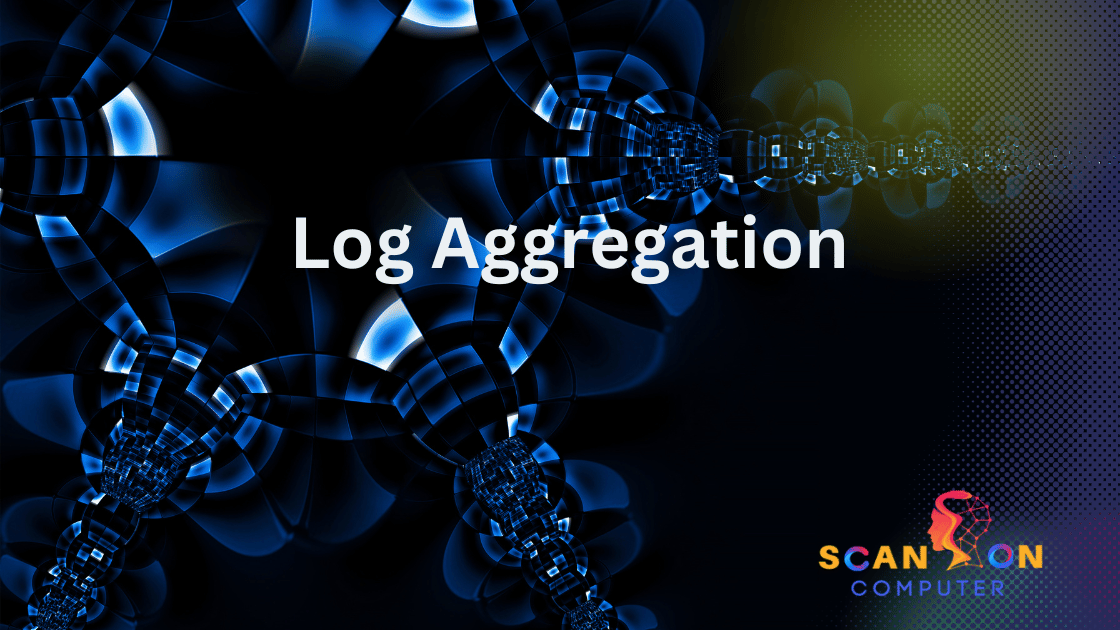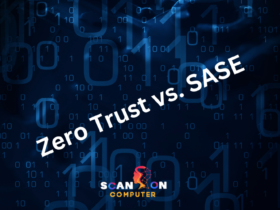Log Aggregation is a fundamental aspect of observability, yet aggregation may seem complicated and daunting. One straightforward way is to use rsync or cron to transfer the files to one central location.
Efficient log aggregation involves parsing and standardizing the data before aggregating.
What is log aggregation?
Log aggregation allows your organization to combine multiple log files into one stream of meaningful data that can be easily analyzed by them. Consolidated logging makes it easier to recognize patterns, respond more rapidly to events, and gain a deeper insight into your digital environment.
Engineers needing information would otherwise have to search through directories of log files across systems in order to gather it; this would be time-consuming and laborious. Log aggregation allows engineers to take advantage of real-time activity streams with semantic schema, providing real-time analysis.
To effectively aggregate logs, you need a logging solution capable of collecting and processing them as they’re sent out–this process is known as collection. Furthermore, you’ll need to decide whether standardizing the data or adopting schema-on-read is preferable and whether the aggregation tool meets locality and data privacy laws.
Why Is Log Aggregation Important
Log aggregation may seem like an innocuous topic at first, but it is one of the key components of modern software environments. Log aggregation provides IT teams with a comprehensive view of their infrastructure and their interrelationships – essential to troubleshooting any errors that arise in even complex infrastructures.
Environments that utilize distributed cloud-based or Kubernetes environments often produce logs that will eventually vanish over time without being collected by a central location using log aggregation tools.
A good log aggregation tool should index the data it gathers into meaningful pieces that enable more advanced searches than typical text editor searches. This is possible because code is treated as data and indexed into conceptual schemas for semantic searches based on its nature; furthermore it makes it easier to see the bigger picture, helping reduce errors while simultaneously pinpointing their causes.
1. Logs are aggregated in a centralized location
Most companies employ software and infrastructure that produce massive volumes of log data, making the search for errors time consuming, money draining and error prone.
Log aggregation provides a more efficient method of solving issues when they arise, as developers can use logs to quickly locate errors or performance issues across servers, applications and network devices.
Once logs are aggregated, they can be parsed to extract valuable information such as usernames, source and destination IP addresses, application names and the like. After being parsed they can then be indexed for faster searching as well as truncated to remove sensitive data such as encryption keys or authentication tokens.
Look for a log aggregation tool that offers real-time storage capabilities with fast search capabilities and semantic querying, plus alerting, anomaly detection and chat ops integration features.
2. Text files become meaningful data
In order to effectively search your logs, parsing is one of the key logging best practices – as well as what log aggregation does. While text files might allow for wildcard or regular expression searching capabilities, log files contain structured data which can be parsed for search results that are both semantically meaningful and fast.
Parsing occurs during the aggregation process as logs are collected and sent to their final destination – such as a SIEM – so they can be run across your system data for correlations, metrics generation and event visualisation. Depending on which aggregator you select, standardizing your logs’ content or using strategies like schema-on-read might also allow consistent analytics across varying formats of data sources.
Log aggregation’s purpose is to transform your log files from chaos into an easily scannable data set for real-time monitoring. Without log aggregation, the alternative would be manual search of ephemeral files – or what I like to refer to as “programming archaeology,” a tedious and time consuming task that’s sure to waste your valuable time and effort.
3. Better real-time monitoring
Log aggregation is an integral component of modern observability platforms, as it enables engineers to monitor systems and applications in real time, quickly detect issues that arise, and identify their root causes quickly.
With numerous applications and infrastructure producing log files daily, a centralized location makes analyzing and searching them much simpler. Without one, extracting useful data would be nearly impossible due to conflicting formatting or an absence of structure in its layout.
Log aggregation tools offer a solution by centrally collecting all logs in one location, parsing them and indexing them quickly for user use – creating conceptual schema for logs as well as fast semantic search capability compared to text editors with wildcard or regex features for searching 10-gig log files. This offers many advantages over using text editors’ wildcard or regex features to locate what they need quickly in large log files.
4. Sophisticated search capabilities
Log files provide critical data that enables IT management and infrastructure maintenance, making log aggregation an essential skill in modern observability. Logs contain invaluable information for monitoring, diagnosing, and solving problems on IT systems and infrastructure – you need the ability to search, report on, and create graphs from them in order to effectively identify problems, monitor them closely, report back effectively on them. Learning how to efficiently aggregate logs efficiently is thus essential.
Log aggregation tools that deliver fast, semantic searches are designed to be quick. This means you can avoid using wildcard or regex capabilities of text editors for searching your logs; rather than doing this yourself you can search your logs based on what they actually contain.
Log aggregation solutions should offer more than a powerful query language; they should also offer intelligent features like automated parsing, real-time alerts and notifications, live tail capabilities, indexing capabilities for compressed files and storage at enterprise scale. Some log aggregation solutions even enable redacting fields during ingestion to conserve network bandwidth and disk space.
How to Aggregate Your Logs?
Programmers know all too well the difficulty and inconvenience involved with gathering and organizing information from different sources into one cohesive format, often called programming archaeology.
No one should attempt to manage and organize logs on their own; there are tools out there to assist in the process for you. There are both open source tools as well as commercial products that enable users to aggregate logs for easier monitoring, search, analysis, and management.
Log aggregation provides many valuable services, one of which is helping administrators to pinpoint potential causes of server errors and network outages. Cloud infrastructure administrators must be alerted of problems that might impact applications or servers across multiple network locations – this makes log aggregation tools particularly helpful in this regard; such tools can detect registry changes as well as authentication attempts from various servers.
File replication
Log aggregation provides organizations with an efficient means of quickly and accurately identifying errors relating to applications, infrastructure and users, which helps ensure all systems and applications work as designed – especially those handling sensitive consumer data. Organizations required to meet compliance regulations such as Requirement 10 of PCI DSS require centralized log management as an indispensable way of maintaining an audit trail for every access of network resources or consumer data.
Log files that undergo the aggregation process are parsed and indexed, enabling semantically meaningful searches to take place. This represents an enormous improvement over relying on text editors with wildcard and regex features to decipher log formats or connect disparate logs together. Furthermore, most logging solutions compress their parsed and indexed logs, helping reduce network bandwidth costs as well as storage needs by compressing more of their contents – this improves query performance when retrieving large volumes of log data; typically sent to SIEMs for further analysis or real-time monitoring purposes.
How Log Aggregation Help IT Teams Spot Trends and Errors?
Log aggregation tools enable IT teams to keep an eye on logs in real time, which helps identify errors quickly, while also helping detect trends or anomalies that require attention.
Look for a log aggregation tool that efficiently parses, indexes, compresses and stores data at scale while also offering metrics and tracing capabilities.
Syslog rsyslog or syslog-ng
The System Logging Protocol (syslog) is an industry standard used for sending device and application log messages from devices and applications to a central server for analysis and monitoring purposes. Syslog has been widely implemented over time across major operating systems, making it the ideal choice for collecting and consolidating syslog data from multiple devices into one central place for monitoring and analysis.
rsyslog is an advanced syslog daemon used for transmitting and receiving log messages from local and remote devices. It offers various advanced features beyond basic functionality of traditional syslog such as TCP/TLS encryption, advanced filtering options and database support for log messages from devices connected locally or remotely.
A syslog configuration file outlines how and where Syslog-ng receives log messages. A typical configuration consists of sources, filters and destinations which may each be configured using one or more filter functions which use logical booleans to limit which messages should be logged to specific destinations. Finally, at the end of a Syslog config, there will be an entry for “log path”, which determines where filtered messages should go (file(), internal() or program() may all work as examples of available log paths).
Choose the Right Log Aggregation Service for You
Log aggregation provides you with structured, meaningful data instead of working with raw log file information. Aggregating logs is an integral component of best practices for logging and can drastically cut troubleshooting time when problems occur within software systems.
Before selecting a log aggregation tool, carefully consider your data size and retention needs as well as scalability and flexible pricing solutions.
Choose a platform that supports multiple formats and can parse and enrich logs with contextual data such as timestamps or source IDs. Furthermore, be sure to choose one which offers both data encryption at rest and in transit, and compliance with industry-specific regulations.
Implementing an effective log management strategy can revolutionize your IT operations and security, making it easier to identify errors quickly and address them as soon as they arise. However, the benefits only accrue if teams regularly review and analyze logs; to gain more knowledge on this subject, please read our comprehensive guide here.
Features of a Log Aggregation Platform
Finding the root cause of software errors can take hours or days if teams must comb through numerous logs manually, but using an efficient log aggregation system can speed up troubleshooting and increase productivity.
Log aggregation solutions should offer flexibility and scalability while keeping costs at a minimum. They should meet data volume and retention time requirements while supporting multiple languages/formats while guaranteeing security, such as encrypted transport of data in transit and storage.
Log aggregation involves collecting, parsing, indexing, and storing data from multiple sources in one central repository for real-time monitoring and fast semantic searches. Furthermore, standardizing and controlling log data makes analyzing information more straightforward allowing faster issue resolution and resolution times. A good solution should also include tools for verification and quality control to ensure collected data is accurate and complete while helping reduce privacy violations or compliance lapses.
Efficient Data Collection
If your IT environment is complex, there may be many log sources, from application components and system devices to network appliances. Each might collect its data in its own format before saving it somewhere like text files on disk or database tables.
Troubleshooting an issue can be daunting when faced with searching through massive log files – even with reliable tools! Finding its cause could take hours or days of tedious detective work and may never materialise at all.
An effective logging solution, like an aggregator, will alleviate these difficulties for you by providing near real-time troubleshooting of any issues in near real-time. This means you’ll become aware of any problems before they impact productivity, so they can be resolved in an expedient fashion. Ideally, such tools support basic features like search, filtering and live tail, in addition to more advanced analytics and dashboard building. It should also be scalable with flexible pricing plans depending on data volume or retention duration requirements.
Robust Processing
An effective log aggregation solution requires that all data be standardised, verified and aggregated into one central location for analysis. This should reduce engineer time spent searching through individual log files or deciphering various formats or correlating errors between systems.
All logs are parsed, indexed and structured so they can be searched in an intuitive manner. Furthermore, search process runs quickly – no more staring at massive files engaging in programming archaeology or using text editors’ wildcard and regex features which can often prove frustratingly slow!
Implementing a full-fledged log management tool makes perfect sense for teams that care about certain metrics and KPIs, including network device log data capture and advanced analytics operations like free text searching and RegEx queries for comprehensive analysis as well as dashboard building-out. A centralized platform with cloud deployment options may even offer greater flexibility than competing tools.
Real-time Monitoring
Working with large log files is often a complex challenge for even experienced techies, due to their variety of formats and needing to be searched in various places.
Log aggregation tools can make this process faster and more effective, as well as serve to monitor systems in real-time and generate immediate alerts when specific events take place.
Log aggregation tools should be capable of collecting real-time data from various sources – files, syslogs, applications, and cloud services are among them – in real time and analyze it, sending notifications when potential issues or security threats are identified via channels like email, Slack, New Relic and PagerDuty to quickly identify problems before they worsen further. Such features are critical for effective monitoring and observability – saving IT teams valuable time and resources while quickly pinpointing any problems as soon as they arise.
Scalability
Scalability is of the utmost importance when working with large volumes of data. Seek out an enterprise log aggregation platform capable of ingestion, processing and storage at enterprise scale; additionally it should offer real-time monitoring functionality.
Log aggregation systems serve the goal of centralizing all information regarding an issue into one location so developers can quickly locate it and address it quickly and efficiently. With information spread across many files, this task becomes harder; hence why many organizations use Syslog daemon or another type of logging solution to transmit multi-line log entries to one central server where they can then be aggregated by an automated tool.
Alternately, you could manually process each individual log file and submit them directly to an aggregation tool – however this approach has several drawbacks – for instance it is usually not scalable and difficult to maintain; additional configuration work and storage costs are required, plus it often cannot provide real-time monitoring and alerts that are key features of observability.
Conclusion
Log aggregation is an integral component of any logging and monitoring strategy. It helps gain a clearer picture of how well your applications and services are performing, which allows for better decisions to be made and easier identification and optimization of applications – something tech pros often lack access to without log aggregation.
Log management is an intricate process encompassing data collection, aggregation, storage, rotation, analysis, search and reporting. When selecting an effective log management tool it is essential that it can cope with large volumes of information that must be kept track of.
Many open-source logging tools such as Fluentd and Logstash are designed as log collectors rather than log aggregators; they assist with one step in the process but don’t cover everything. To get the most out of your log aggregation tool, opt for one that was built specifically with scaling in mind from day one; this will save time and effort while freeing you to focus on more valuable tasks.










Leave a Reply
View Comments